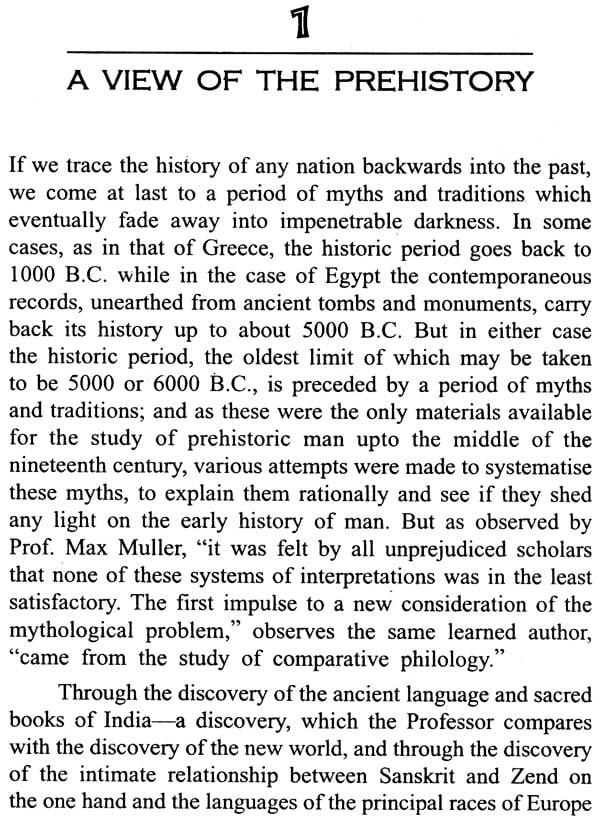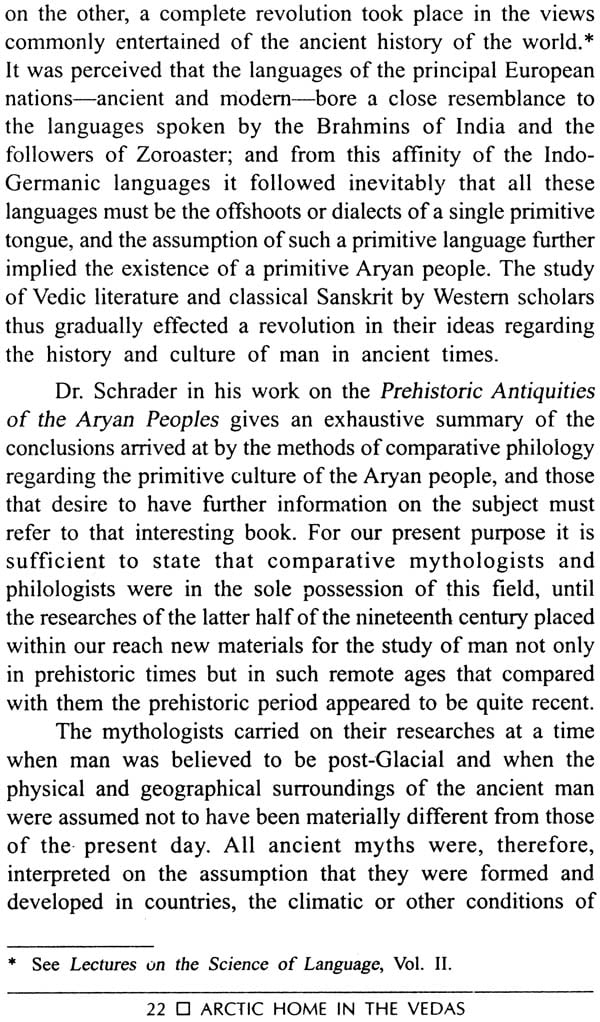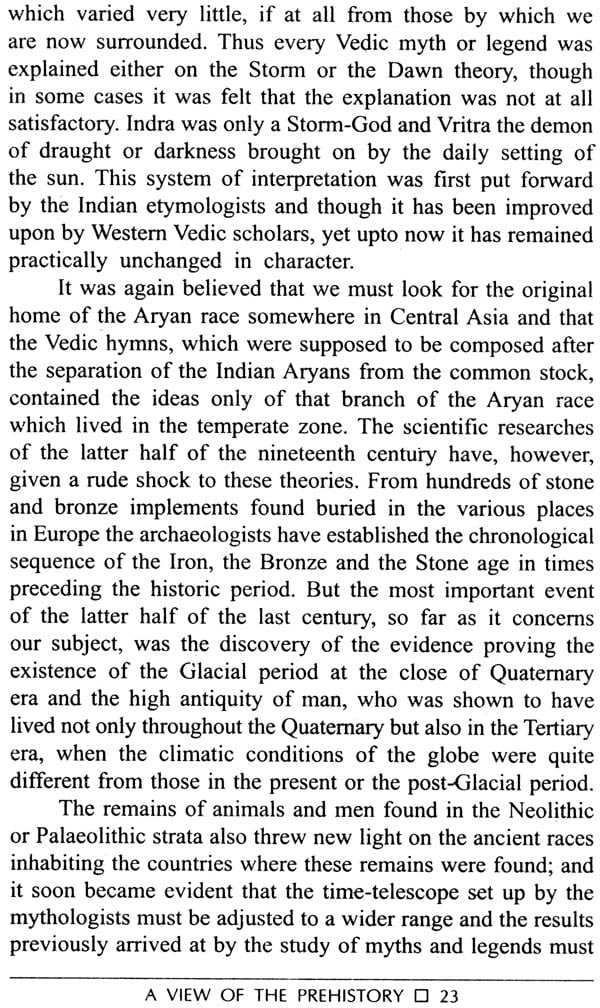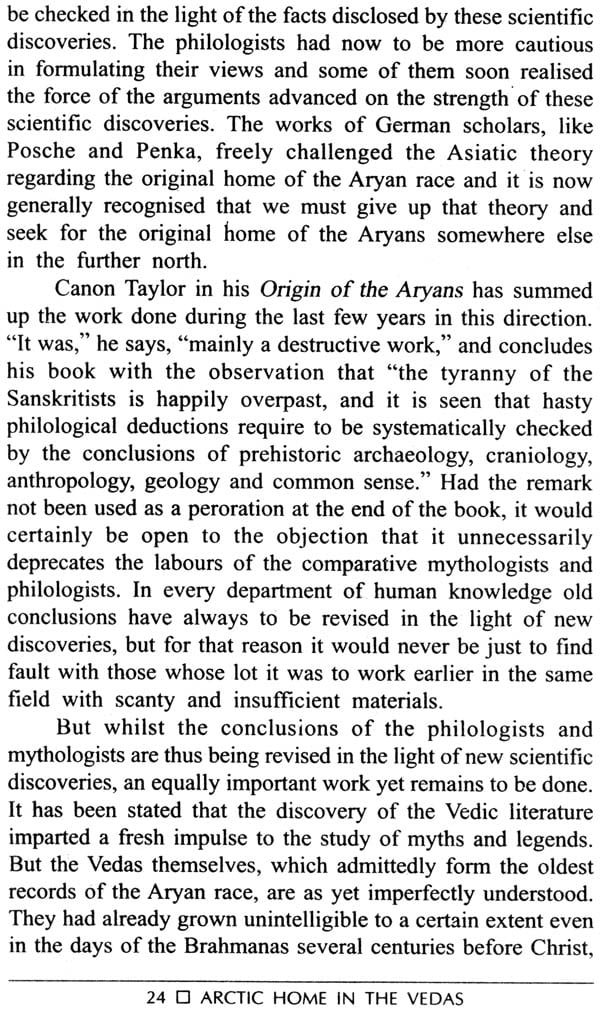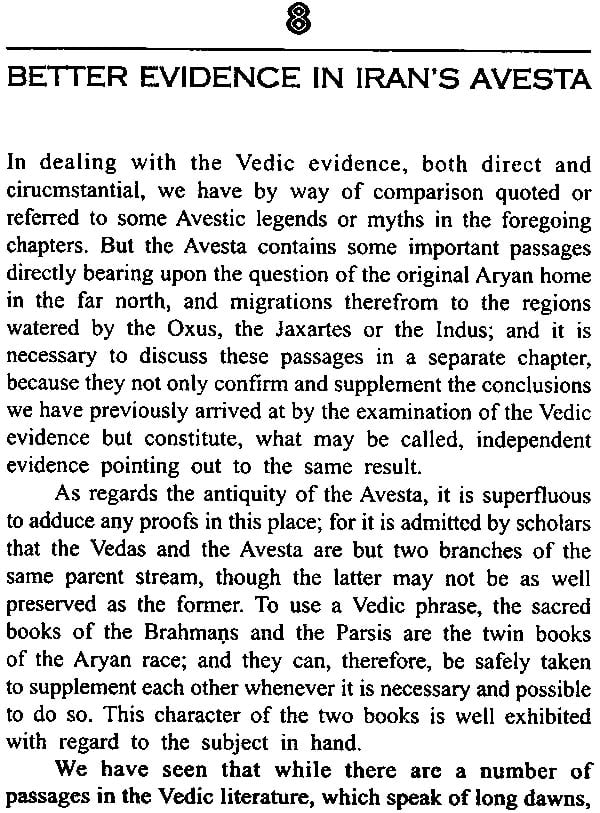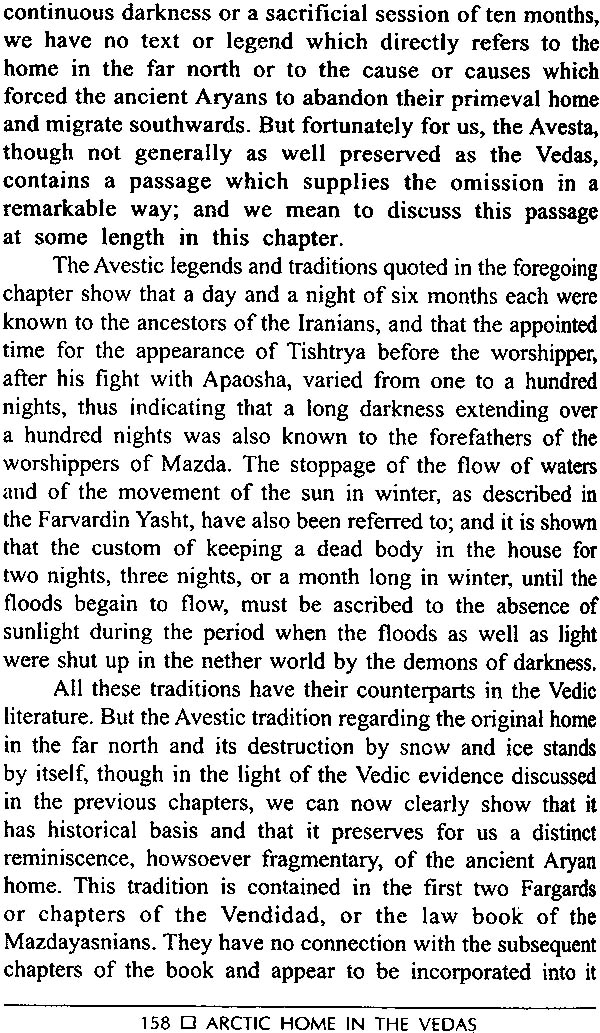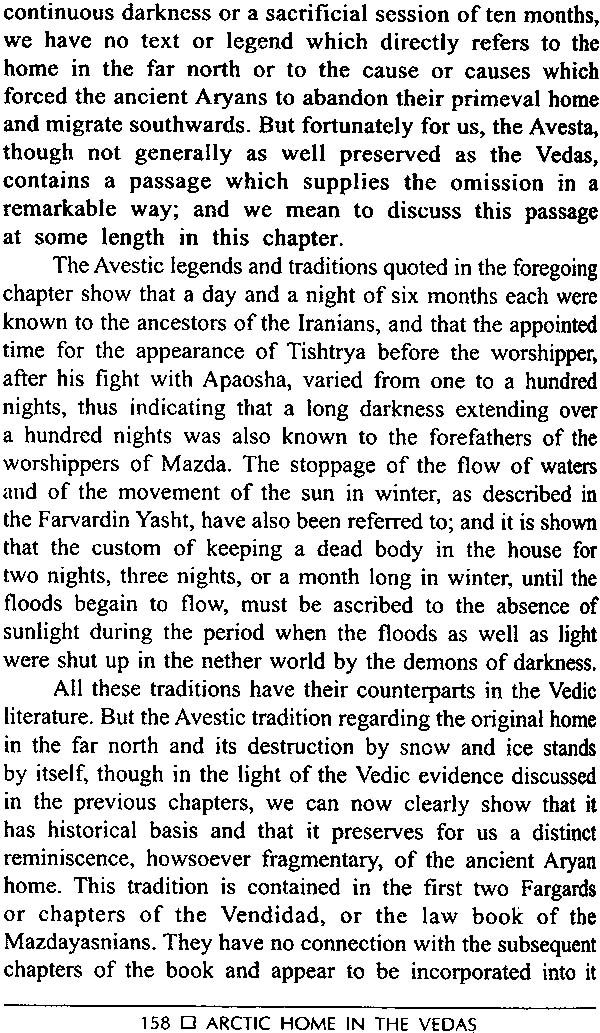
Arctic Home in The Vedas (An Ignored Historical Classic)
Book Specification
| Item Code: | NAL896 |
| Author: | Lokmanya Bal Gangadhar Tilak |
| Publisher: | Vijay Goel English Hindi Publisher |
| Language: | English |
| Edition: | 2008 |
| ISBN: | 9788189297169 |
| Pages: | 192 |
| Cover: | Hardcover |
| Other Details | 9.0 inch X 6.0 inch |
| Weight | 380 gm |
Book Description
Back of the Book
A significant Vedic research based on astronomical references, carried out over a century ago, which suggests that the astronomical method of research is certainly superior to the linguistic method in as much as it supplies us with certain definite and in disputed facts which can be made the nuclei of the different periods of history. We can then use the literary or linguistic method to supplement these results.
A non-technical book on a fascinating subject related to India’s heritage and its influence on world history.
The obscure and unintelligible passages in the Rigveda disclose the polar attributes of the Vedic deities or has traces of an ancient arctic calendar; while the Iranian Avesta expressly tells us that the happy land of Airyana Vaijo, or the Aryan Paradise. Was located in a region where the sun shone but once a year, and that it was destroyed by the invasion of snow and ice, which rendered its climate inclement and necessitated a migration southward.
The Vedas are the oldest in world literature and have been preserved letter for letter and accent for accent despite the non-development of the art of writing till long years. The Aryan race who produced them are spread all over Europe and Western Asia-Where was their original home and what made them disperse from there? Historians have explored the question, without much convincing results. Their examination is based on linguistic and literary methods, a relatively general and inaccurate method for such studies. Lokmanya Tilak for the first time applied the astronomical method, and came to strikingly convincing conclusions-that the Aryans lived in polar regions which had a most pleasant climate at that nights were very long, as they still are. They shifted when the climate began the climate began to change.
The work is a significant contribution to Indian and world history-which is still awaiting its due.
The Series-Editor, Mahendra Kulasrestha, has been the first Editor of the well-known Orient Paperbacks, and has been associated with the Bharatiya Vidya Bhawan, Mumbai; V. Vedic Research Inst., Hoshiarpur, Pb.; Vision Books; Hind Pocket Books; Rajpal and Sons; Indira Gandhi Memorial Trust; HUDCO; DDA (Slum Wing) SEWA Delhi, etc. He has Planned and edited the useful Public Concerns Series, been Consultant Editor of International Books Update.
His books include; Japan-An Enigma, An Anthology of Japanese Literature in Hindi, world Poetry Number of in Hindi Literary magazine, An Anthology of Hindi Short Stories, Existence and other Poems (English translation of Shot Amrita Pritam’s poems). A study of 14 Western philosophers in Hindi etc.
| 1 | A View of the Prehistory | 21 |
| 2 | A Picture of the Arctic Regions | 36 |
| 3 | Primary Evidence: The Ushas in the Vedas An Unusual proof, Another Better Verse, Clinching the issue | 49 |
| 4 | Other Evidence : Long Days and Nights | 65 |
| 5 | Other Evidence : Months and Seasons | 75 |
| 6 | Other Evidence : The Cows' Walk Sacrifice | 86 |
| 7 | Evidence in Strange Vedic Myths | 107 |
| The Legend of Indra and Vritra, Legend of the Ashvins, The Surya's Wheel, Vishnu's Three Strides, Trita Aptya, Apah, Seven-fold, Nine-fold and Ten-fold The Ten King and Ravana | ||
| 8 | Better Evidence in Iran's Avesta | 157 |
| 9 | Closing Time Thoughts | 173 |
| Notes and Meanings | 185 |
